 by Allister Thompson
by Allister Thompson
Back when I used to spend all of my disposable income on CDs, I used to visit record store alley in my city, where the three music megastores jostled for position and our custom. This was in the days when CDs were still the primary way to consume music, say, 1997. Buying music weekly was kind of my solace when I was poor! Anyway, as I perused the rock section I would often pass by a card labelled “Barclay James Harvest”, and though I was fairly knowledgeable about seventies music, I hadn’t heard of this band; however, the album covers were kind of alluring. What was this mysterious band and what was it all about?
Years later, while used vinyl shopping I came across a copy of BJH’s Time Honoured Ghosts album for a couple of bucks and reckoned it was the perfect time to give the band a try. This was one of the post-prog albums in which BJH fused CSNY-style vocal harmonies with soft rock and remainig traces of flower power/prog experimentation, and I was hooked enough to try out some more, including the band’s early classics that featured big ol’ slabs of string section mellotron, as well as orchestration, accompanying the melodic, emotional songs by the band’s three writers. And so a fan was made.
Let’s recap. Barclay James Harvest was formed in Oldham (near Manchester) in 1967 during that legendary explosion of British hippie creativity, managing to secure themselves a deal with the prestigious Harvest label, EMI’s progressive imprint and home to Pink Floyd, among other luminaries. You needed something to set yourself apart from the crowd of nascent prog bands at that time, and BJH’s original hallmark (though not quite a gimmick) was to employ the services of an actual mini-orchestra, presumably to show everyone that this was “serious” music. The first few albums also feature full orchestration, which is sometimes not for the best; sometimes it almost overwhelms the rock arrangements, as on the studio version of the classic “Mockingbird”. Nonetheless, the vocal and instrumental skills of John Lees (guitar), Les Holroyd (bass), Woolly Wolstenholme (keys) and Mel Pritchard (drums) did win the group a devoted following for their dignified, often spacy and ethereal prog-rock.
Several classic albums came out of this period, the best being Once Again, and the best representation of what the band was all about was the live album, Live (which probably contains more string mellotron than any other album ever made!). However, mass commercial success eluded the band, which was presumably at least making a living.
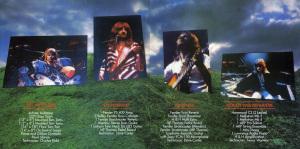
This led to some genuine hit-making and a true hit album in Gone to Earth, which contained the classics “Hymn” and “Poor Man’s Moody Blues”. More importantly, this resulted in long-term, sustainable success in Germany, of all places, which became the band’s primary market. It’s always interesting to ponder why a particular sound seems to jive well with a particular culture and not others, or whether it’s just the ways of Fate. Anyway, BJH showed appreciation for its new fans with such hits as “Berlin” and a giant concert at the Berlin Wall in 1980.
As with most seventies prog bands, the band tried to make its sound more technologically inspired (read: artificial) in the eighties but the decline in its fortunes was, of course, inevitable. However, despite the sad passings of Wolstenholme and Pritchard, BJH lives on today — but unfortunately, it has had to live on in separate iterations. As with many bands of the era, close friends became enemies with competing versions led by Lees and Holroyd touring around. I find that very sad, but it’s so common amongst that musical set that it would make a great PhD dissertation topic for a psychology student.
So, to sum up: if you like mellotron, soaring lead guitar, lush three-part harmonies and unabashedly romantic lyrics and melodies, Barclay James Harvest is a band you should try listening to. Let’s visit their discography!
To read about the band’s two live albums of the seventies, read this article.
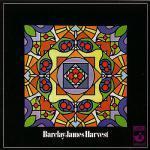
This album starts with a pretty uncharacteristic slice of lead-guitar driven psych, “Taking Some Time On”, which is quite groovy, but the typical BJH form emerges quickly with Wolstenholme’s mystical “Mother Dear“, backed by strings. Woolly’s songs tended to be darker and more poetic than the other members’. “The Sun Will Never Shine” features ethereal flute ‘tron; as noted, heavy use of mellotron is a hallmark of early BJH. Holroyd’s plaintive vocals serve “When the World Was Woken” well, which features some typical plainspoken lyrics: “If live is so hard to live/Why not die?”. Early BJH generally featured a contrast between some strangely hard-hitting lyrics and far-out musical stylings. There are some missteps, such as the awful “Good Love Child”; to be honest, BJH was at its worst when trying to “rock out”. It’s just not convincing. True to the spirit of the era, the album closes with the 12-minute “Dark Now My Sky”, which starts with pompous narration before turning into a symphonic piece marrying full orchestration with mellotron parts and the first sign of Lees’ talent for evocative lead guitar (usually high on the neck!) and what sounds like a full choir. Like the Moodies’ Days of Future Past, this grandiosity is either your cuppa or it ain’t. A very strong debut album, even for that era.
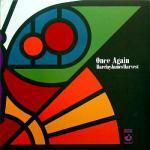
BJH’s second album is an all-time classic (in my mind) and the full realization of the members’ early artistic aspirations. It’s not a perfect album but the highlights are truly wonderful. The sound is still spacy but with a tougher edge, as on “She Said“, where Pritchard really steps up to the plate with some great drum parts and Lees has stiffened the spine of his guitar sound. It combines with Woolly’s mellotron to form an impressive sonic rampart; this dramatic eight-minute tune is lyrically uninteresting, but Lees’ guitar hero-ing keeps it compelling. Wolstenholme’s cynical “Happy Old World” exemplifies his sardonic worldview; like fellow keyboardist Mike Pinder, he wasn’t afraid to tell it like it was about the world’s ills. The album’s rep, however, is predicated on the wonderful melodic epic “Mockingbird“, which features a hypnotic guitar line, sweet harmonies, an earworm melody, mystical lyrics and far-out mellotron; in other words, a perfect early seventies progressive rock track. The orchestration is back for this as well. A bonus is Lee’s hushed Tolkien-inspired “Galadriel“, a haunting song made even more spectral by distant mellotron. The best tracks on this album are the perfect crystallization of the utopian dreams of the British progressive scene. A must-have album for prog fans.
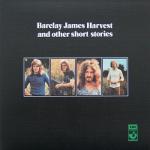
This album is a nice complement to Once Again, though not as good. The songs are already getting shorter, which is actually not a bad thing. Lee’s opening track, “Medicine Man“, however, is a cracker, with surreal lyrics and ominous strings. A much more aggressive, stripped down version can be found on the Live album; I like both. Wolstenholme fires off another bitter classic, “Someone There You Know”. “Harry’s Song” is another one of those failed attempts to be badass rockers, but “Ursula (The Swansea Song)” is a very beautiful acoustic hippy ballad with a sing-song feel and pretty mellotron. That ruminative acoustic mood continues on the next couple of tracks, already making this album feel more akin to CSNY’s output than to prog, especially the derivative doo-dooing on “Song With No Meaning”. The album concludes with a big ol’ slab of pomp with the stentorian “After the Day”, another vehicle for maximum ‘tron and a lovely oboe part; Wolstenholme was clearly the dominant compositional figure in the band at this point. This album finds the band already leaving the early prog sound behind for a compact and harder-hitting style.
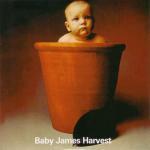
Not sure if the album title is a James Taylor reference (I hope not; I can’t STAND anything about James Taylor’s music), but it’s kind of apt; BJH was clearly interested in leaving prog behind, but nonetheless turned in an album chock-a-block with plenty of prog epicness, particularly in one of the band’s best all-time songs, “Summer Soldier”, which starts with violent-sounding field recordings, a tolling bell, and a scary loop of Lees’ shouting “Kill!” Evidently meant to be a statement about the “troubles” across the Irish Sea, and a strong one, it’s driven by strong acoustic strumming and wistful lyrics: “I feel sorry for the soldier who is shot and stoned in anger/I feel sorry for his wife and child at home”. At ten minutes it goes through several attractive melodic permutations on the way. Wolstenholme’s “Moonwater” is practically Impressionist with Debussy-esque arrangements for strings and horns. “Crazy Over You” is an okay workout for Lees’ lead guitar and “Thank You” is practically glam-rock. Sort of an uncomfortable album with too much push and pull between styles.
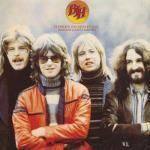
To me, Baby James Harvest, while a decent album, sounds like a band at its last gasp; but the band managed to figure out which style it wanted to pursue, and it started to do it very well. Everyone is Everybody Else is free of extra reverb, not hazy but sharp-sounding and urgent. And that urgency carries over into Lees’ passionate opener, “Child of the Universe“, which, despite its new age-sounding title, is actually a pretty coherent plea for peace as well as a great melody. Holroyd’s “Negative Earth” is truly groovy, driven by pulsing Rhodes and bass parts; a great piece of soft rock that matches Bob Welch’s best work. In fact, this album contains many of Holroyd’s best numbers; “Crazy City” brings back the prog with distorted guitars, mellotron and a herky-jerky drum showcase of an intro for Pritchard before turning into a breezy, elegant mid-tempo rocker with great harmony vocals. The album closes with another of Lees’ all-time greats, “For No One“, a pounding slow mellotron-driven ballad containing more passionate pleas for peace and reason, as well as plenty of soloing in his trademark upper-neck style with two-string bending. What characterizes the songs on this album is their focus on hummable melody and universal sentiments; it should have gone platinum!
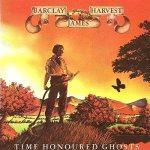
This is not as strong an album as the previous, though several of the songs are pretty great; opener “In My Life” is a rare strong rocker from the band, groovy and meaningful, with some nifty changes of pace and tasty harmonies. “Sweet Jesus” is a little too cute but one of Holroyd’s most melodic songs — great chorus. “Titles” is horrible; all they did was assemble Beatles song titles into lyrics. Gimmicky and terrible. Fortunately, there are plenty of other nifty songs such as a tasty little acoustic ballad, “Jonathan” (as in Livingston Seagull), Wolstenholme’s pompous synthy prog epic “Beyond the Grave” (showing again his penchant for bitter morbidity!), the lovely 12-string chime of “Song for You” and the breezy California-style soft rock of “One Night“, with ethereal background vocals worthy of 10cc. This album is a typical slice of mid-seventies soft rock but at the better end of the scale, with (mostly) smart lyrics, beautiful harmony vocals and memorable hooks.
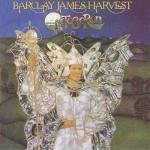
Octoberon is a weird album and not very successful overall; it drags in a lot in places. Holroyd’s string-driven acoustic number “The World Goes On” is a promising start, very pretty, but the lengthy “May Day” finds Lees’ formerly chunky lead sound thinned out in a textural way, and the eight minutes of this tune are ponderous without sounding wise. Even Woolly misfires with the overly pretentious “Ra”, briefly losing his prog mojo. It’s more Garry Wright than BJH, to these ears. “Rock n’ Roll Star” is a cute soft rock song, but I do hate rock songs about rocking, so despite its melodic charms, I find it insipid. “Polk Street Rag” is yet another of those raunchy occasional attempts to “rock out” — they just weren’t all that good at it. It’s like a bad version of Elton John. The two saving graces (almost) of the record are the rousing folk-rock of “Mill Boys” and the very odd but compelling “Suicide?” in which our narrator commits just that. While it’s bizarre, it features lovely lead guitar, sweeping synths and heavenly background vocals, which are the band’s winning formula. But those lyrics … not sure what Lees had been smoking or contemplating around that time, but he clearly needed a vacation: “I stepped out on the guard rail, saw the crowds slowly part/Heard a voice shouting “Don’t jump, please for God’s sake let me move my car!”
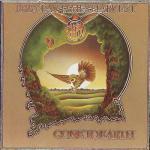
This was the apex of the band’s career, in commercial terms, making them an almost-household name in the UK, tantalizing thousands of Germans and spawning a number of classic tracks. It’s not a uniformly great album, but as an example of late seventies softish rock it has few equals. “Hymn” was a Christmas season hit (a much-coveted accomplishment for UK pop stars), even though the lyrics were apparently about heroin addiction, not love of the Christ. Still, with its inspirational drony strumming, it’s a stirring track. You’d think I’d hate “Poor Man’s Moody Blues“, considering it’s a gimmicky rewrite of “Nights In White Satin” as a sarcastic response to the band being accused of being Moody Blues soundalikes, but dang if isn’t a beautiful track with its own soaring vibe. Woolly rediscovers his prog mojo with the celestial “Sea of Tranquillity”. Holroyd effectively and movingly tackles the seal hunt (!) with “Spirit of the Water”, and his Beatlesque “Taking Me Higher” is a real lighter-waver with its ponderous piano, floaty string synths, reverby arpeggios on guitar and beautifully mixed vocal blend. I can picture myself slow dancing with my girl at the 1978 high school prom under the disco ball. If I weren’t four years at old at the time, that is. I won’t mention the bad songs on this album; the good ones are too much fun.
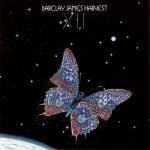
Once you’ve finally made it, you want to enjoy your success for a while with no risky missteps, so the band basically duplicated the last one’s sound. With one small change: many songs are apparently intended to be related as a suite, judging by titles such as “Fantasy: Loving is Easy” and “Classics: A Tale of Two Cities”. So what, is this supposed to be a bookshop instead of an album? Regardless, the one thing this album is, is not very good. “The Closed Shop” takes shots at trade unions (though I suppose it’s intended to be more nuanced than that), a common theme in seventies UK … my mother likes to lecture me on how the unions held the UK hostage, blah blah blah, etc etc etc. Sure, so how’s a Tory world working out now? Huh? Anyway, I digress. A nice melody, but not my cuppa. “The Streets of San Francisco” is a great tune but the lyrics are weird in a bad way — something about a sexy lady serial killer or something? Nice mellotron, weird tune. “Sip of Wine” is Doobies cheezy (ugh), “Nova Lepidoptera” repeats the horrors of “Titles” by fashioning lyrics out of sci-fi book lines (double ugh!!), and “Berlin“, while a giant hit with Germans, is pretty but too characterless and, well, a bit limpid to be truly moving to me. Sorry, guys. I can’t like everything. A slight redemption is the unassuming ballad “Harbour”, which has some great jingle-jangle guitars and those heavenly backing vocals I so enjoy.
After this Wolstenholme quit and the rest continued on, with rather mixed success artistically and commercially. And that’s the limit of my in-depth BJH knowledge.
Visit BJH



